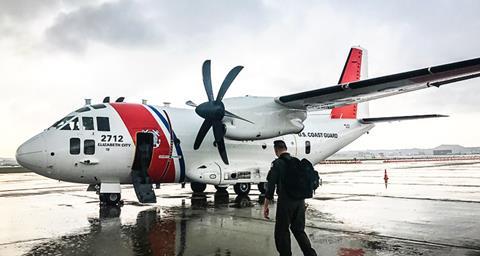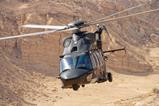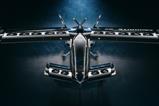The US Coast Guard (USCG) has performed the first flight of a Leonardo C-27J equipped with new surveillance and mission equipment as part of a plan that will see it eventually field 14 upgraded examples of the twin-turboprop type.
Conducted from NAS Patuxent River in Maryland on 6 September, the sortie of the HC-27J prototype was a “modified functional check flight”, says the USCG, a necessary step ahead of moving to the full flight-test phase.

Initial flight tests will be performed by the Naval Air Warfare Center Aircraft Division’s Air Test and Evaluation Squadron with support from the USCG and Leonardo at NAS Patuxent River.
The USCG received the former US Air Force assets following a decision in fiscal year 2014; 13 were reactivated from storage at Davis-Monthan AFB in Arizona, while a 14th was transferred directly following acceptance by the air force in 2017.
Work on the upgrade programme began in 2017, the USCG says; three additional aircraft are currently in the process of receiving the new mission equipment.
Originally equipped with a weather radar and communications equipment, the service is seeking to significantly upgrade its C-27J fleet to improve its fixed-wing surveillance capabilities.
At the core of the enhancement is a US Navy-developed mission system called Minotaur, which has been deployed across its fixed-wing fleet to integrate sensor inputs from the C-27J’s new surface search radar and electro-optical/infrared sensors.
It offers substantial improvements in memory and processing capability, the USCG says, and “enables aircrews to gather and process surveillance information that can be transmitted to other platforms and units during flight”.
The USCG says the HC-27J will fill a gap in its aircraft inventory that has existed for over a decade.































